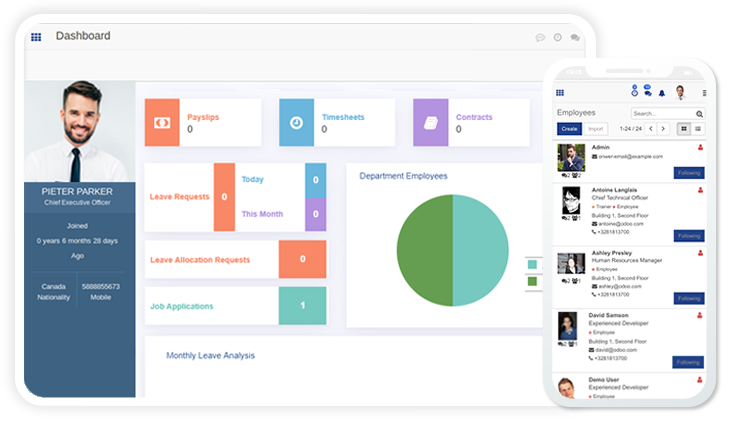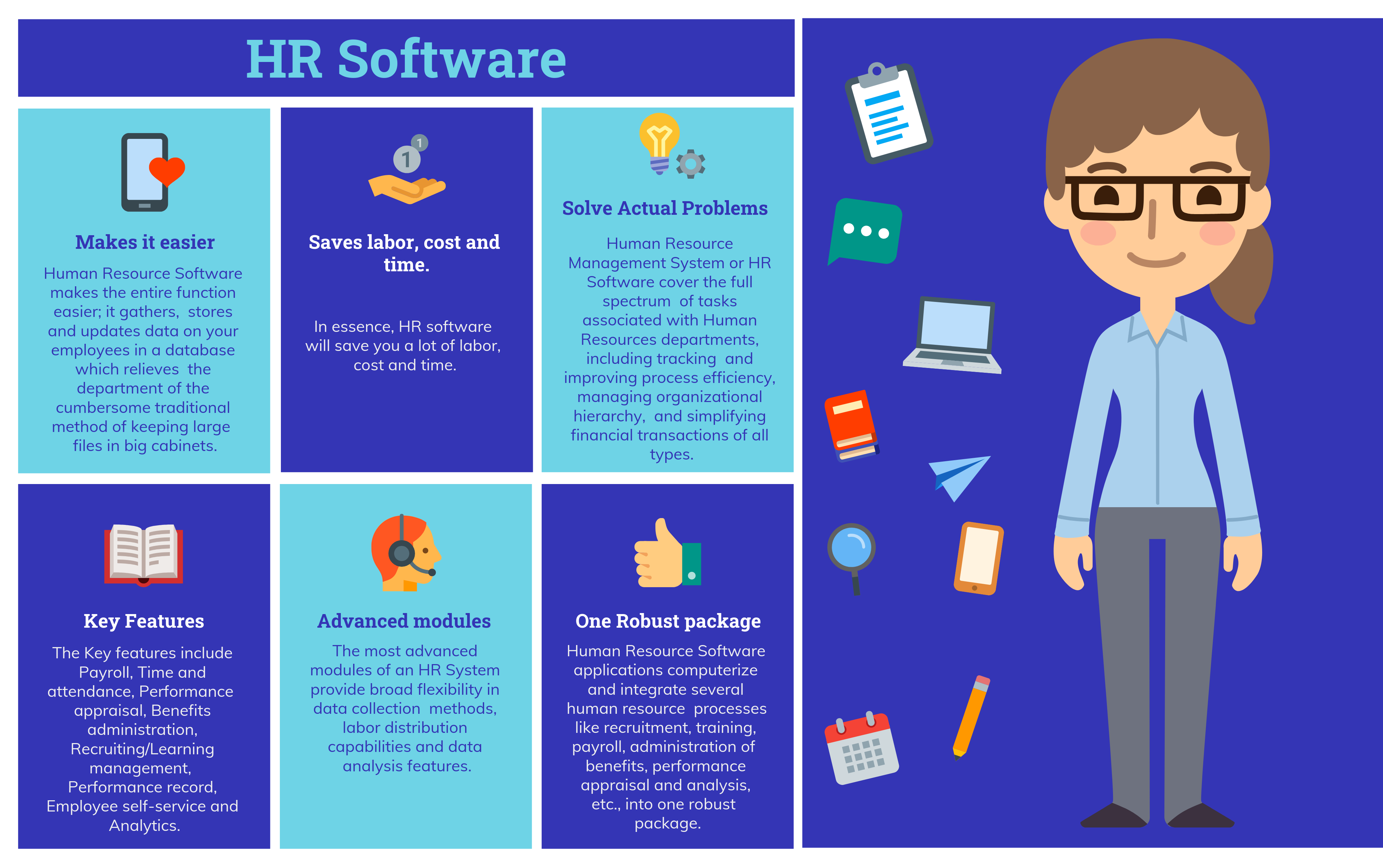In the realm of modern HR practices, open source HR systems are emerging as a game-changer, offering organizations a cost-effective and customizable solution to streamline their HR processes. Embark on this informative journey as we delve into the world of HR system open source, exploring its benefits, features, and the path to successful implementation.
Open source HR systems empower organizations to take control of their HR operations, fostering efficiency, enhancing employee engagement, and driving business success.
Overview of Open Source HR Systems
Open source HR systems are software applications that manage human resources processes, such as payroll, benefits, and recruiting, and are available under an open source license. This means that the source code is freely available for anyone to view, modify, and distribute.
There are several benefits to using open source HR systems. First, they are typically more affordable than proprietary HR systems, as there are no licensing fees. Second, they are more flexible and customizable, as you can modify the source code to meet your specific needs.
Third, they are more secure, as the open source community can help to identify and fix security vulnerabilities.
Examples of Popular Open Source HR Systems
Some of the most popular open source HR systems include:
- OrangeHRM
- OpenHRMS
- iRecruitment
- Odoo
- PeopleSoft
Features of Open Source HR Systems
Open source HR systems offer a range of features that cater to the core functions of human resource management. These features include:
- Employee management:Maintain employee records, track attendance, manage leave requests, and facilitate performance evaluations.
- Payroll processing:Calculate salaries, deductions, and taxes, and generate paychecks.
- Recruitment and onboarding:Post job openings, manage applications, and facilitate the onboarding process for new hires.
- Training and development:Track employee training records, manage course enrollment, and assess training effectiveness.
- Benefits administration:Manage employee benefits, including health insurance, retirement plans, and paid time off.
One of the key advantages of open source HR systems is their customizability. Organizations can modify the source code to tailor the system to their specific needs and requirements. This allows them to add or remove features, change the user interface, and integrate with other systems.
Integration with Other Systems
Open source HR systems can be integrated with a variety of other systems, including:
- Payroll systems:To automate payroll processing and ensure accuracy.
- Time and attendance systems:To track employee hours and attendance.
- Applicant tracking systems:To streamline the recruitment process.
- Learning management systems:To provide online training and development opportunities.
- Benefits administration systems:To manage employee benefits and ensure compliance.
By integrating with other systems, open source HR systems can provide a comprehensive solution for human resource management, automating tasks, improving efficiency, and reducing errors.
Benefits of Using Open Source HR Systems

Open source HR systems offer numerous advantages to organizations, including cost-effectiveness, improved efficiency, and enhanced employee engagement.
Cost-Effectiveness
Open source HR systems are significantly more cost-effective than proprietary systems. They do not require licensing fees, which can amount to thousands of dollars annually. Additionally, open source systems often have lower implementation and maintenance costs.
Improved Efficiency
Open source HR systems are highly customizable, allowing organizations to tailor them to their specific needs. This can lead to significant improvements in efficiency, as HR professionals can automate tasks and streamline processes. For example, an open source HR system can be used to automate the hiring process, track employee time and attendance, and manage payroll.
Enhanced Employee Engagement
Open source HR systems can also enhance employee engagement by providing employees with self-service tools. These tools allow employees to access their HR information, such as pay stubs and benefits information, at any time. Additionally, open source HR systems can be used to create online employee communities, where employees can connect with each other and share ideas.
Challenges of Using Open Source HR Systems: Hr System Open Source

Open source HR systems offer several advantages, but they also come with potential challenges. One of the main concerns is security risks.
Security Risks
Open source software is accessible to the public, which means that potential vulnerabilities can be easily identified and exploited by malicious actors. Additionally, open source HR systems often store sensitive employee data, making them a target for cyberattacks.
Mitigating Risks
To mitigate these risks, organizations should implement robust security measures, such as:
- Regularly updating software to patch vulnerabilities
- Using strong passwords and encryption
- Implementing access controls and role-based permissions
- Conducting regular security audits
- Training employees on cybersecurity best practices
Secure Implementation
Examples of secure implementation include:
- Deploying open source HR systems on a dedicated server with limited access
- Using a web application firewall to block malicious traffic
- Implementing multi-factor authentication for user access
- Regularly backing up data and storing it in a secure location
By following these measures, organizations can minimize the security risks associated with using open source HR systems and ensure the protection of sensitive employee data.
Implementation of Open Source HR Systems
Implementing open source HR systems can bring numerous benefits to organizations. However, successful implementation requires careful planning and execution. This section provides a step-by-step guide to help organizations effectively implement open source HR systems.
Planning and Preparation
Proper planning and preparation are essential for successful implementation. Organizations should clearly define their HR goals and objectives, assess their current HR processes, and identify the specific requirements for an open source HR system. Additionally, they should ensure they have the necessary technical expertise and resources to support the implementation and maintenance of the system.
System Selection
Choosing the right open source HR system is crucial. Organizations should evaluate different systems based on their specific needs and requirements. They should consider factors such as functionality, scalability, ease of use, and vendor support. It is advisable to conduct thorough research, consult with experts, and request demos to gain a comprehensive understanding of the available options.
Implementation
Once the system is selected, organizations should follow a structured implementation plan. This typically involves data migration, system configuration, user training, and testing. It is important to involve key stakeholders throughout the implementation process to ensure a smooth transition and user adoption.
The open source HR system is gaining popularity due to its cost-effectiveness and flexibility. There are many free and open source HR software available, such as free open source hr software . These software offer a wide range of features, including employee management, payroll processing, and time tracking.
The open source HR system can be customized to meet the specific needs of an organization, making it a versatile solution for businesses of all sizes.
Testing and Evaluation
Thorough testing is essential to ensure the system is functioning as intended. Organizations should conduct both functional and performance testing to verify the accuracy, reliability, and efficiency of the system. Additionally, user feedback should be gathered to identify any areas for improvement.
Ongoing Maintenance, Hr system open source
Open source HR systems require ongoing maintenance to ensure they remain up-to-date and secure. Organizations should establish a regular maintenance schedule, including software updates, security patches, and data backups. They should also consider providing ongoing training to users to ensure they are proficient in using the system.
Case Studies of Open Source HR Systems
Open source HR systems have been adopted by organizations of all sizes across various industries. Here are some notable case studies that demonstrate the benefits and successful implementation of open source HR solutions:
Mozilla
Mozilla, the non-profit organization behind the Firefox browser, implemented the open source HR system OpenHRMS to streamline its HR processes. The system enabled Mozilla to automate tasks such as employee onboarding, time tracking, and performance management, resulting in significant time savings and improved efficiency.
Red Hat
Red Hat, a leading provider of open source software solutions, uses the open source HR system Fedora People to manage its global workforce. The system provides Red Hat with a centralized platform for employee data management, recruitment, and talent development.
Fedora People has helped Red Hat improve its HR processes and reduce administrative costs.
The City of Barcelona
The City of Barcelona implemented the open source HR system Openbravo ERP to modernize its HR management. The system integrated with the city’s existing IT infrastructure and provided a comprehensive solution for employee management, payroll, and talent management. Openbravo ERP has enabled the City of Barcelona to improve its HR processes, reduce costs, and enhance employee satisfaction.
Last Word
In conclusion, HR system open source presents a compelling solution for organizations seeking to optimize their HR functions. With its cost-effectiveness, flexibility, and potential to enhance employee engagement, open source HR systems are paving the way for a new era of HR management.
Embracing open source HR systems is not merely a technological shift but a strategic investment in the future of your organization’s HR capabilities.
Essential FAQs
What are the benefits of using open source HR systems?
Open source HR systems offer numerous benefits, including cost-effectiveness, customization, improved efficiency, enhanced employee engagement, and integration with other systems.
How can open source HR systems be customized?
Open source HR systems are highly customizable, allowing organizations to tailor the system to meet their specific needs and workflows.
What are some examples of popular open source HR systems?
Popular open source HR systems include OrangeHRM, Odoo, and PeopleSoft.
 HRIS System
HRIS System
